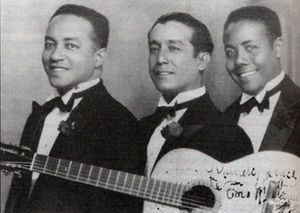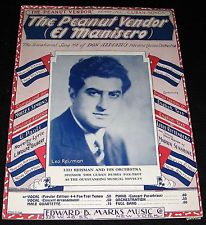
Listen
About
Wikipedia (I hope your Spanish is up to par)
Trio Matamoros
One of the most influential groups in the development of Cuban son, Trio Matamoros were founded in Santiago de Cuba in 1925 by guitarist and singer Miguel Matamoros. Matamoros also wrote their songs, which combined sophisticated but accessible lyrics with simple, unforgettable melodies. One of his most famous compositions is Lágrimas Negras (Black Tears).
Matamoros was inspired to write the lovesick meditation on rejection when he overheard a woman crying near the residence where he was staying while visiting Santo Domingo, the capital of the Dominican Republic. He first composed it as a tango, but the version he recorded is considered to be the first example of a new genre, a fusion of son and bolero, called, understandably, bolero-son.
Trivia
- The Trio Matamoros were one of the most popular Cuban trova groups. Formed in 1925 by Miguel Matamoros (Santiago de Cuba, 8 May 1894 – 15 April 1971; guitar), Rafael Cueto (Santiago de Cuba, 14 March 1900 – 7 August 1991; guitar) and Siro Rodriguez (Santiago de Cuba, 9 December 1899 – Regla, 29 March 1981; maracas and claves). All three were singers and composers.
- The Trio Matamoros played boleros and son. They toured all Latin America and Europe and recorded in New York. In 1940 Guillermo Portabales performed with the trio. Matamoros expanded the trio into a conjunto for a trip to Mexico and hired the young Beny Moré as singer from 1945 to 1947. They recorded many 78rpm records and LPs; some of their output is available on CDs. The group were renowned for the harmony of their voices, and the quality of the lyrics.
- Matamoros was one of the greatest and most prolific composers of the Cuban son; his first hit was El que siembra su maiz (literally, he who sows his corn). Lágrimas negras (Black tears) and Mamá, son de la loma / y cantan en llano (Ma, they’re from the hill, and they sing on the plain, meaning, they’re from Oriente and they sing in Havana). The group, whose members stayed together for 35 years, disbanded in 1960.



